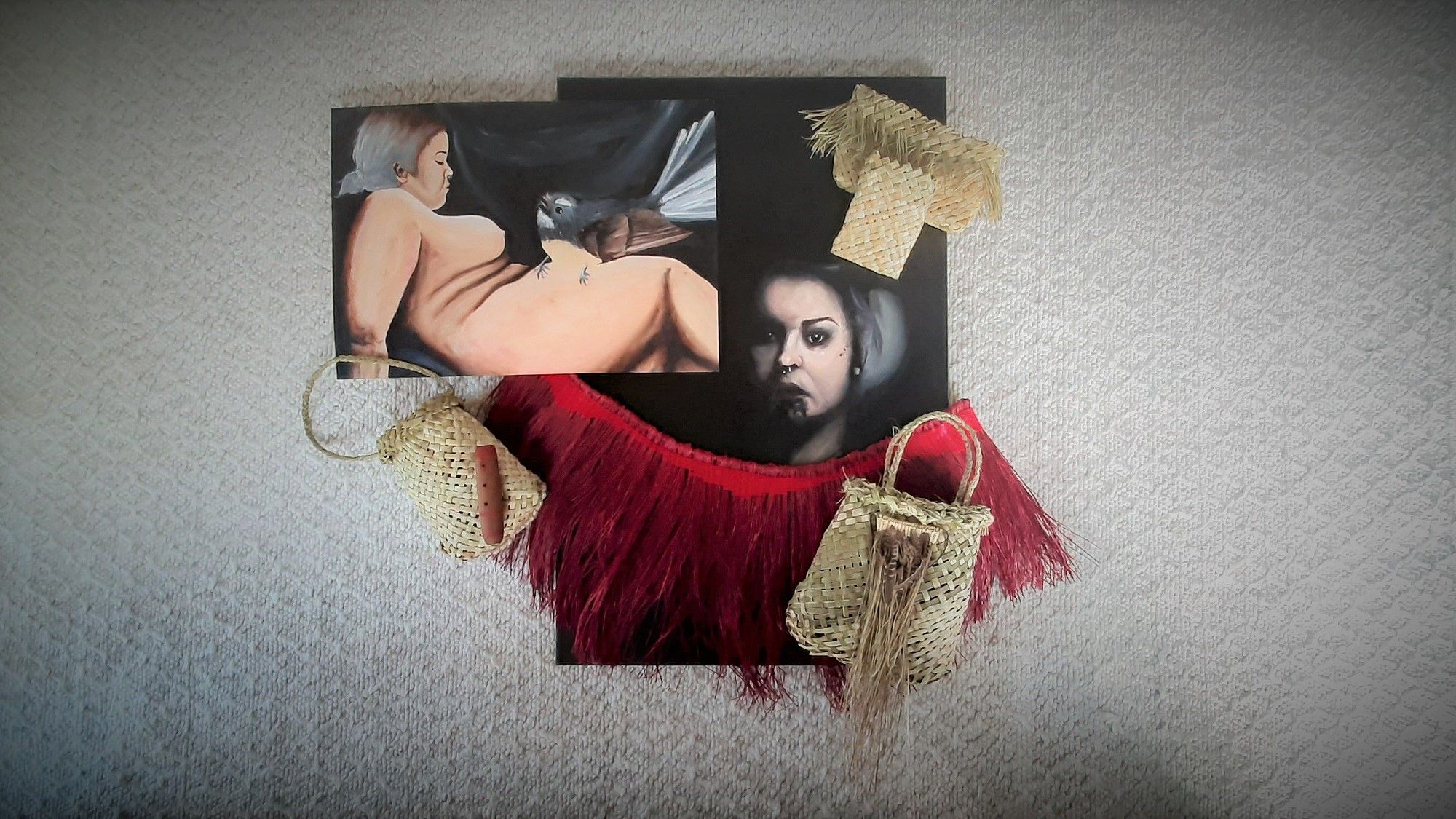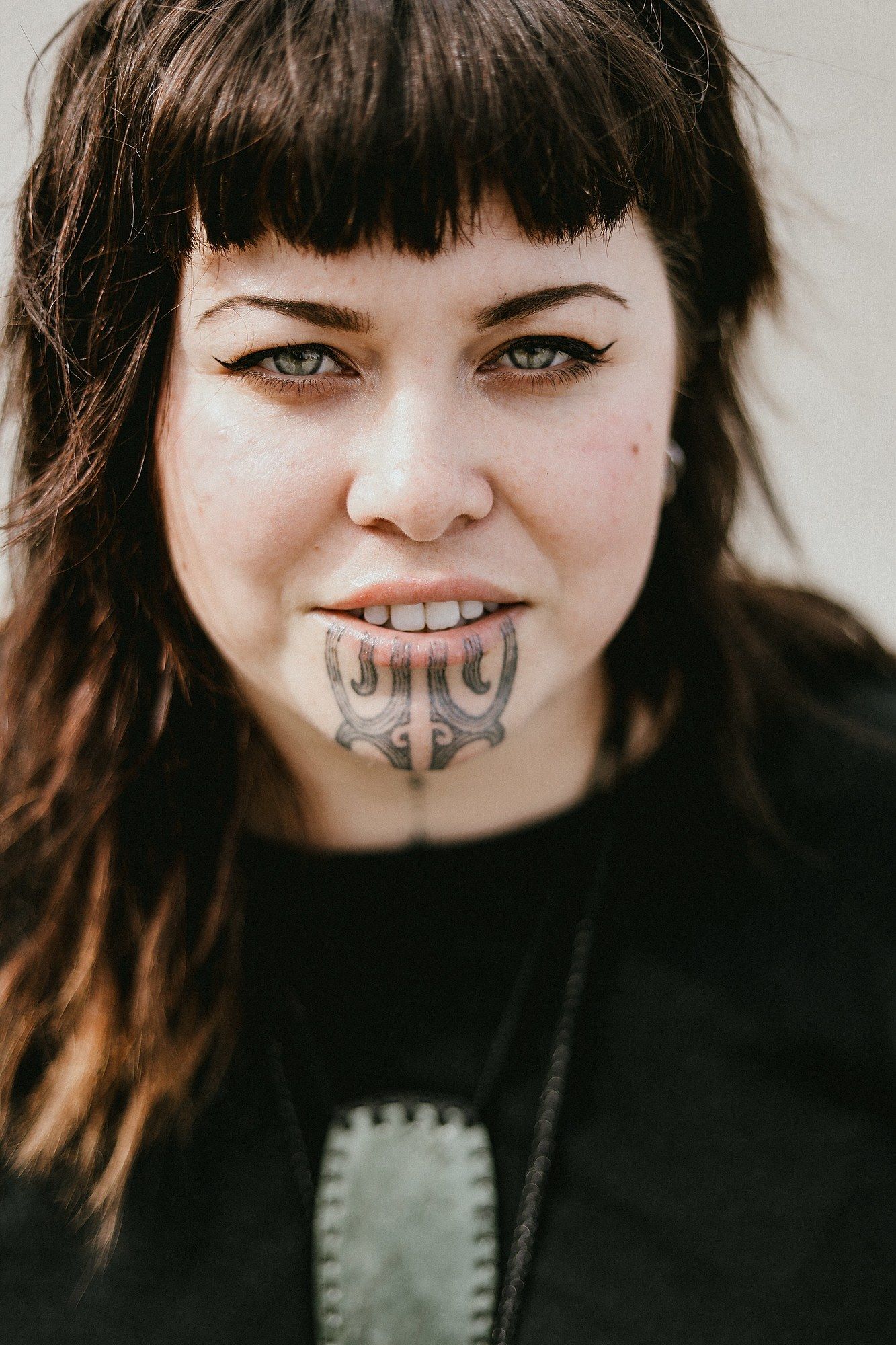Māori-fying Pākehā in Visual Culture
The ‘Māori-fication’ of Aunty Jacinda and meanings behind our motifs in Māori visual art.
In this time of isolation, a strange development has emerged. Images have been popping up across Aotearoa, and they’ve proliferated on our social media. Images of Prime Minister Jacinda Ardern – a ‘Māori-fied’ version. In one image she is seen with kōtore huia in her hair and a kahu huruhuru around her shoulders, staring off into the distance. In others, she is a Māori Princess reincarnated, moko kauae and all. In the wake of Prime Minister Ardern’s decisive response to the Covid-19 pandemic, one that has undoubtedly saved many, many lives in Aotearoa, these images have arisen.
Not long after Ihumātao and the Oranga Tamariki uplifting scandal, we are seeing this deification of Jacinda by some Māori artists. What does it mean to deify Pākehā in that way, particularly one who represents the colonial institution responsible for both past transgressions and much of the systemic racism today? The reality of colonisation in Aotearoa means that many Māori do not have access to these taonga gifted to Ardern – taonga such as moko kauae, kōtore huia and kahu huruhuru.
Kākahu have varied importance, based on the materials used and the time taken to make the garment. There are various kinds of cloaks, from a pākē (a more crude style of rain cloak made of thin whenu) to a kahu kuri (a highly prized cloak made of dog skin). Nowadays, kahu huruhuru (feather cloak) has gained the most popularity. Māori often use these as a kākahu for special occasions, such as graduations and weddings. Though it is not uncommon for whānau or hapu to have a kahu huruhuru or korowai, there are many whānau who do not. Whānau who are disconnected from their culture, or whānau who do not have the financial ability to purchase these taonga.
It is common for people of political or pop-cultural importance to be gifted a kahu huruhuru or korowai
Gifting Pākehā kahu huruhuru or korowai is not a new practice. While in Rotorua for her nationwide tour in 1954, Queen Elizabeth II was gifted a korowai by ‘the people of New Zealand’. It has become common for people of political or pop-cultural importance to be gifted one upon their arrival in Aotearoa.The implications of seeing not only a Pākehā, but the head of the colonial institution, ‘gifted’ a korowai may bring up a feeling of mamae for many Māori who do not have this taonga. It is short-sighted to say that Māori shouldn’t be allowed to gift kākahu to Pākehā whom they feel deserve it. But it is essential to distinguish that this is not a gift from all Māori. We did not all get in our group message and agree to this. Therefore, a korowai on the shoulders of a Pākehā does not mean that all Māori accept them, or that they are somehow Māori.
Kotore huia are the bird’s tail feathers, used to signify a rangatira. The huia was prized as a taonga by both Māori and Pākehā up until its extinction in 1907. Because of this, kotore huia are even more rare than korowai or kahu huruhuru. They are even more out of reach for most Māori. Any kotore huia that are owned by whānau have been passed down, usually through very highly regarded whakapapa lines. Those not in these whakapapa lines would be lucky to ever touch a kotore huia, let alone be afforded the opportunity to wear one.
To use this visual language on Pākehā is to open up a neo-colonial can of worms
To Māori-fy an image of a Pākehā by putting a cloak on them or a kotore huia in their hair is to use the visual language of Māori status. When we employ this visual language we are using motifs to identify this person as someone who holds mana in a Māori world, and we should be doing this with the utmost care. To employ this visual language for a Māori person makes sense: we, as Māori, all hold mana in te ao Māori. And even if we do not have access to these taonga, our whakapapa means we have an inherent right to them. Māori are not a monolith; we all have different opinions. That said, to use this visual language on a well-known Pākehā is to open up a neo-colonial can of worms.Although you as an artist may personally believe that Ardern holds the mana in te ao Māori to deserve portrayal in this way, many will not.
A more straightforward discussion can be had around the misuse of moko kauae by particular Māori artists, both of whom were tāne. Much has been written about the wearing of moko kauae by Pākehā women, especially in the wake of life coach Sally Anderson. Mera Lee-Penehira, Leonie Pihama and Tina Ngata (all of whom wear moko kauae) have done important mahi in this kaupapa. Moko kauae and the question of who has the right to wear them is fairly black and white. Wāhine Māori – that is, women or femme-identifying people who have Māori whakapapa – have the absolute right to wear moko kauae.
There are no requirements as to what wāhine Māori must achieve or do in order to wear moko kauae. For a broader explanation of this you can read my journey in revealing my moko kauae. It is simply not tika for a Pākehā woman to wear moko kauae. It is a visual representation of Māori whakapapa, which is something a Pākehā cannot claim. It is also not a gift that can be given by Māori to Pākehā, in the same way whakapapa cannot be.
Many wāhine Māori are still trying to unpack the colonial notion that they do not deserve moko kauae – unless they have te reo, live on their whenua, or are important in their iwi. The resurgence of moko kauae is helping to dismantle these notions informed by colonisation. Seeing moko kauae on Pākehā can cause real harm to wāhine Māori who may already feel like they are not enough.
It will only add to the colonial amnesia and Pākehā entitlement to our culture
These taonga placed on Ardern as a sign of her perceived mana are taonga that have been stolen by colonisation. To place these on her, in a way that lifts her above many Māori, will only cause more mamae for our people. It will only add to the colonial amnesia and Pākehā entitlement to our culture. Some people may say these are just drawings, that they do not warrant such an analysis. But visual culture is influential – visual language is important.
For the past 250 years, Māori have been exoticised in visual culture. Our motifs and visual languages have been stolen, appropriated and exploited by Pākehā, while our artists have been ignored and excluded from the canon of art in Aotearoa. It is only because of the Māori art renaissance of the 1970s and 80s that we are now able to reclaim our visual culture.
It's frustrating that, as Māori artists, we must understand that, whether we like it or not, we are a representation of our people. Pākehā artists do not have the same weight to carry. It is a burden that all great Māori artists have grappled with, from Ralph Hotere to Diane Prince. In particular, Māori artists who use Māori imagery must understand that, in neo-colonial Aotearoa, that picture of the Māori Princess you draw may be the only positive representation of Māori culture someone sees. We need to be aware of and wear that weight, like a kahu huruhuru. A gift and a taonga.

